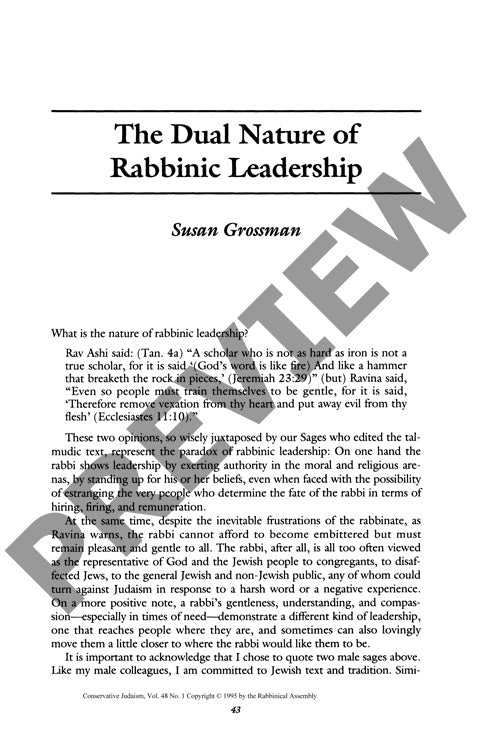The Dual Nature of Rabbinic Leadership
Couldn't load pickup availability
The ancient Talmudic tension between firm authority and gentle compassion continues to shape modern rabbinic leadership, particularly as women enter what was historically an exclusively male role. Through opposing perspectives of Rav Ashi and Ravina, classical Jewish texts illuminate enduring questions about effective religious leadership that now intersect with contemporary gender dynamics. Drawing on surveys from the American Jewish Congress on women rabbis and ethnographic observations from congregational settings, this research combines traditional textual analysis with sociological examination of gender differences in religious leadership approaches. While fundamental rabbinic leadership challenges remain consistent across genders, women rabbis demonstrate distinct patterns in collaborative decision-making, emotional expression in spiritual contexts, and integration of intellectual and spiritual dimensions. The study reveals that 70% of women rabbis experience sexual harassment, highlighting unique authority establishment challenges. However, women rabbis also benefit from cultural perceptions of accessibility and nurturing capabilities, particularly in pastoral care contexts. The research demonstrates successful implementation of collaborative leadership models, evidenced by increased congregational participation and innovative programming. The conclusion suggests that integrating both authoritative and gentle leadership approaches, while acknowledging gender-specific challenges and advantages, enhances overall rabbinical effectiveness and moves closer to an idealized vision of religious leadership that draws on both traditionally masculine and feminine qualities.

More Information
-
Physical Description
-
Publication Information
Published 1995
ISBN
-
Publication Credits
Susan Grossman

